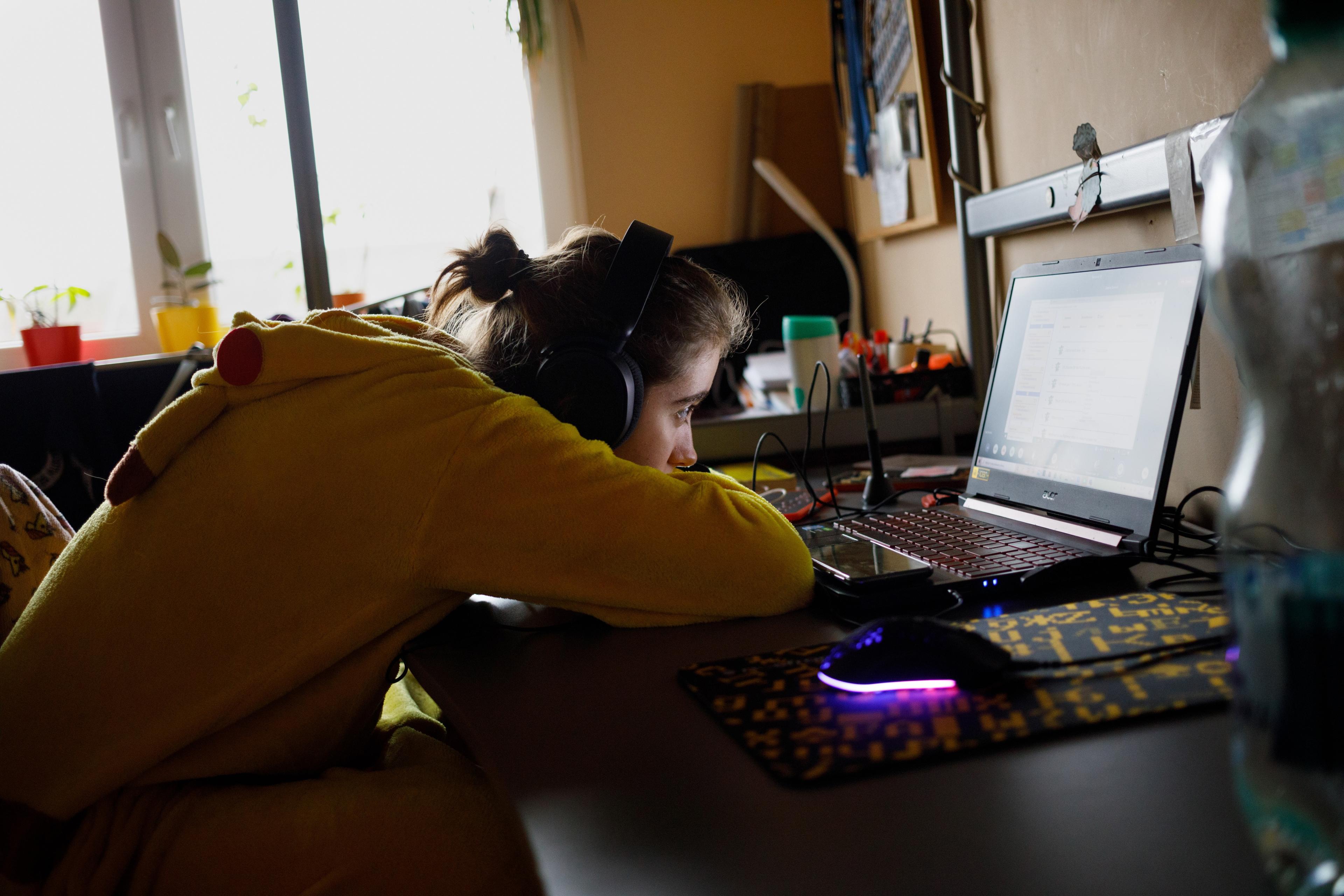Confusion is experienced by most of us as a disagreeable feeling and a waste of precious time. But experiencing confusion when encountering a new problem, or a surprising statement, can actually be deeply productive in the context of learning and enhancing brain plasticity. Over the past few years, scientists in educational psychology and neuroscience have started to uncover what Socrates knew all along: that experiencing confusion is often the first step to overcoming our misconceptions and biases, and that it can lead to something more valuable than simply an answer.
In Plato’s early dialogues, states like confusion and puzzlement are considered the roots of genuine enquiry. These texts recount stories of Socrates going about town, conversing with some young citizen in a public space, and scrutinising their (overconfident) opinions on matters such as the nature of justice. With their assumptions meticulously demolished, the poor young interlocutor is left in a deep state of aporia (from the Greek for ‘perplexity’ or ‘puzzlement’). Embracing this state of newly found ignorance was, in Socrates’ eyes, the first indispensable step of any true enquiry into the truth: ‘[Having] been reduced to the perplexity of realising that he did not know … he will go on and discover something.’
In the post-truth era where fake news is ubiquitous, (re)learning how to question our assumptions and misconceptions might be considered part of our survival toolkit. Here is why, according to educational psychologists and neuroscientists, you should rekindle your ability to get yourself and others into what some have called ‘productive confusion’.
In their seminal paper on confusion from 2003, the psychologists Paul Rozin and Adam Cohen asked college students to observe facial expressions and report on the ‘emotion’ being expressed, as well as the facial movements involved. To the researchers’ surprise, the most common descriptor reported by participants was confusion. Although confusion was not a category in standard taxonomies of emotion, let alone as part of the set of ‘basic emotions’ recognised by psychologists, they found it to be one of the most ubiquitous emotional reactions reported by their participants. This opened up an exciting new territory of psychological research: what is the nature of confusion? And what is its use?
Think about it: confusion may arise each time you encounter something you cannot immediately make sense of. For most of us, this experience occurs daily – when trying to make sense of a surprising piece of news, or to understand why your boss changed their mind about the launch date of your next project, or to grasp why you had such an explosive argument with your partner the night before. All of these experiences might leave you confused, whether it is confused about how a certain (political, societal, meteorological) event could have occurred, or about the actions, decisions or assertions of others. The world is an inherently confusing place for creatures like us. As much as we can fine-tune our abilities to recognise patterns based on the ever-growing database of our previous experiences, there will always be encounters with odd objects, statements and problems that we can’t quite make immediate sense of. Overcoming these is what we call learning.
Since Rozin and Cohen made their discovery, several authors in the field of educational psychology have taken an interest in studying the effect that these experiences of confusion might have on learning. Confusion, these authors have found, might have an unsuspected role in our ability both to recognise ‘cognitive obstacles’ in our learning process and, more surprisingly, to cue our brain to deploy extra cognitive powers in order to overcome these obstacles.
Confusion emerges when we encounter some stimuli that is new and complex, where our ability to make sense of it using our current strategy is low. In a sense, confusion seems to distinctively involve the experience of the limits of our cognitive power. And there are times in which this cognitive obstacle is so great that our efforts lead only to frustration, which decreases our motivation to the point of us giving up on figuring out an answer to the problem altogether. In those cases in which we are missing too big a piece of the puzzle, it might seem that the game is not worth the strain. This is what researchers call ‘hopeless confusion’.
But sometimes, confusion can turn into ‘productive confusion’. Empirical research suggests that, in the right conditions, confusion can act as a driver of success in complex learning tasks. Complex learning tasks require learners to do things like generate inferences, diagnose and solve problems, produce explanations, and demonstrate application and transfer of acquired knowledge. This form of learning can be contrasted with so-called shallow learning activities such as memorising key phrases and facts, or repeating simple sequences of movements over and over.
Complex learning tasks characteristically present learners with cognitive obstacles, and researchers have found that when learners respond to the obstacles by experiencing confusion, they then tend to invest more cognitive effort in solving the problem. Feeling confused can motivate learners to engage a deeper kind of enquiry and more thorough information-processing, which increases their chances of actually overcoming the cognitive obstacle. Interestingly, confusion seems particularly useful when the task requires us to operate a conceptual change – that is, to overcome misconceptions, biased assumptions, or prejudices, in order to develop a more sophisticated and accurate understanding of a set of facts. Confusion in these cases seems to prompt a shift of approach so that people experiencing confusion are more likely to look for and adopt alternative strategies to the problem.
Confusion as a mental state does not only help us recognise and understand that we are facing a problem for which we have no easy solution, it also triggers us to think deeper as a result. Confusion motivates us to work harder, to invest more mental effort in the problem – and to work differently on the problem, to look for different ways or strategies to approach it.
Research in neuroscience is slowly uncovering how confusion works to help us achieve difficult learning goals. Neuroscientists argue that encountering a complicated problem or obstacle in the context of learning a new skill (be it an athletic skill, a language, or how to play a musical instrument) enhances neuroplasticity in our brains, which make us more alert, focused and cognitively active. On subsequent attempts to learn, we’ll have a higher level of focus, and thus a higher probability of succeeding.
Now, how much confusion is optimal in order to stimulate a deeper processing without pushing us on the edge of discouragement? Where exactly is the sweet spot between a learning task that is overwhelmingly difficult, and one that is too easy and plain boring? An empirical study attempts to answer precisely this question. In ‘The Eighty Five Percent Rule for Optimal Learning’ (2019), Robert Wilson and his colleagues found that the optimal degree of difficulty for stimulating the brain to heighten its focus without leading learners to give up, is a task in which learners get it right about 85 per cent of the time, and err about 15 per cent of the time. If the task is so difficult that for 100 trials we make many more than 15 mistakes, then it is likely to be too hard for our brains to integrate and learn.
Learning something new and complex inherently involves experiencing confusion and frustration. But the lesson for educators, and for all of us, is that this confusion and this frustration should be embraced and pursued as a mark that our brain is preparing to focus more deeply, to process more thoroughly, so as to give us a better chance at learning something valuable.
Reframing confusion as a positive and valuable feeling should invite us to rethink some of our daily practices. In our current world in which answers, information and data are readily available at the tip of our fingers, we have little opportunity to exercise our confusion muscle. Or rather, we deprive ourselves of opportunities to enhance our brain plasticity by trying to think of possible answers of our own. Instead of trying to come up with hypotheses for our questions, we tend to simply put our brains on pause while we type in the question in our search engine and wait for the answer to be delivered to us. Next time you are faced with a complicated question, puzzle or surprising information, why don’t you try to follow your confusion where it leads you?








